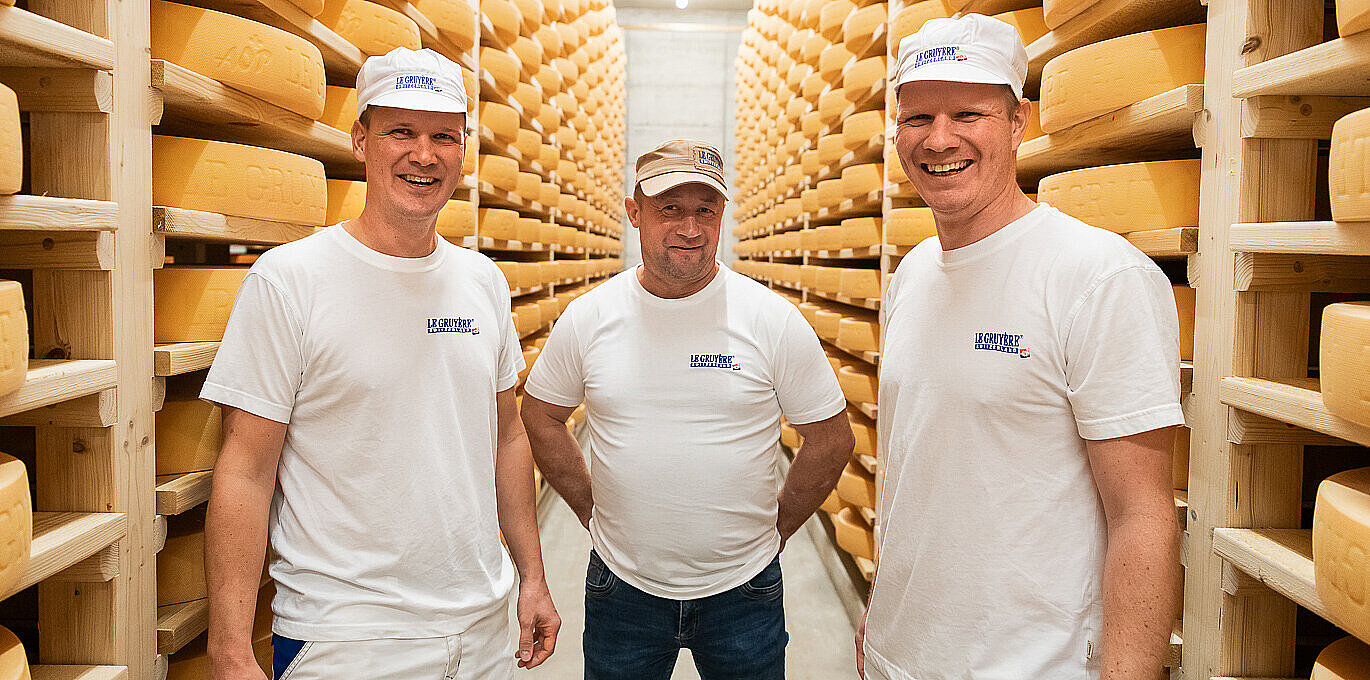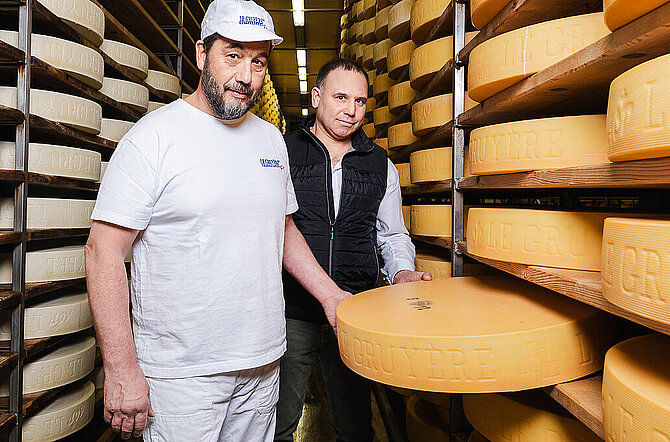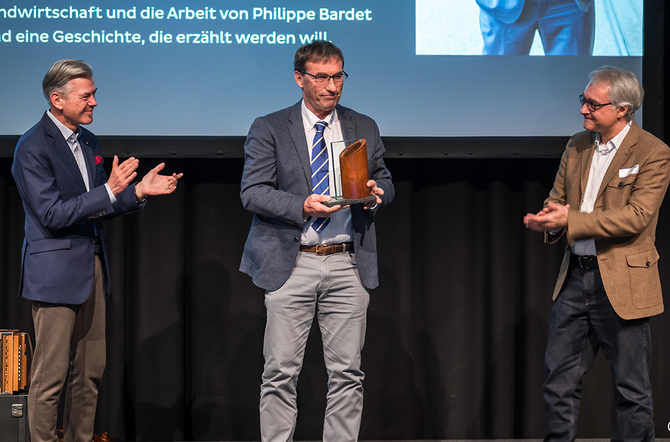A zero-carbon cheese dairy can be achieved!
For the Spielhofers, who have been making cheese for over 40 years, working with nature goes hand in hand with protecting it. The latest example is the new cheese dairy in Sonvilier (BE), opened in September 2022, which combines the production of Gruyère AOP with sustainability.

“Our parents taught us to respect natural resources”
Florian & Cédric Spielhofer, cheeseproducers in Sonvilier
As welcoming as it is well-stocked, the Sonvilier cheese dairy shop occupies the premises of the old cheese dairy, which is listed as a heritage site. In 2022, after more than two years' work, a brand-new building made of local wood was erected in perfect harmony. Large bay windows offer a bird's-eye view of a cellar containing 4,000 wheels of cheese, equipped with state-of-the-art technology. As well as being aesthetically pleasing, the facilities are unique in that they are designed to meet the challenge of carbon neutrality. The cheese dairy is dedicated exclusively to the production of Gruyère AOP and is ideally suited to the task: “Inevitably, having a single product makes it easier to optimise processes,” says Cédric Spielhofer, who runs Fromages Spielhofer with his brother Florian. So how does it work? The owner gives us a quick tour.
1. Milk circuit
The layout is pragmatic: it follows the logic of the milk flow, and products never cross paths. The loading bay is already at the right level thanks to the raised floor. Everything has been designed to avoid wasting space and energy.
2. Heat recovery
Processing 2.7 million kilos of milk into Gruyère AOP requires a lot of heat! All the required energy is produced in 3 water storage tanks, one of which holds 60,000 litres and the other 30,260 litres. Heat pumps transfer thermal energy between the tanks. The water is kept at around 5° in the first tank, 50° in the second and 85° in the third, enabling the complex cooling-heating ratio characteristic of a cheese dairy to be controlled. Therefore, during the production process, cooling the cellars, salt bath and whey generates heat that can be used to make the next day's cheese, as well as to heat the water. This system ensures maximum recovery, cuts out the use of fossil fuels, in this case gas, and produces welcome savings, estimated at several tens of thousands of francs a year.
3. Electricity generation
The cheese dairy's electricity requirements are between 220,000 and 230,000 kW per year, mainly for the heat pumps. Thanks to a roof covered with solar panels, the new building in Sonvilier produces enough to meet 50% of requirements in winter and 70 or even 80% in summer.
An intermediate formula
“The cheese dairy is the first of its kind in French-speaking Switzerland,” explains Florian Spielhofer. In fact, it is the fruit of a vision shared by the Spielhofer family with Energie Zukunft's technical engineer, in this case the uncle of the two brothers, and with Société coopérative de fromagerie de Sonvilier. The Spielhofer family holds 51% of the shares, while the Sonvilier cooperative owns the remaining 49%. “On our own, we would never have been able to make the investments required,” says Daniel Krähenbühl, the company's chairman, who is delighted with this win-win situation.
Protecting nature: in the family’s DNA
As far back as 2004, Spielhofer Fromages SA, then run by its founder Josef Spielhofer, was supplied with environmentally friendly electricity thanks to a partnership with a wind farm on Mont Soleil. As far back as the second generation of the Spielhofer family can remember, the judicious use of resources has always been part of the manufacturing process. “Our parents taught us to respect natural resources, both in our leisure time and in our day-to-day work. For us, it goes without saying that we have to make an effort, for one simple reason: natural resources are not inexhaustible,” concludes Florian Spielhofer.
The Spielhofer cheese dairy in Sonvilier in figures
- 2.7 million kilos of milk
- 230 tonnes of Gruyère AOP produced annually
- 4,000 cellar spaces available
- 8 milk producers in Sonvilier and a further 21 accredited producers






